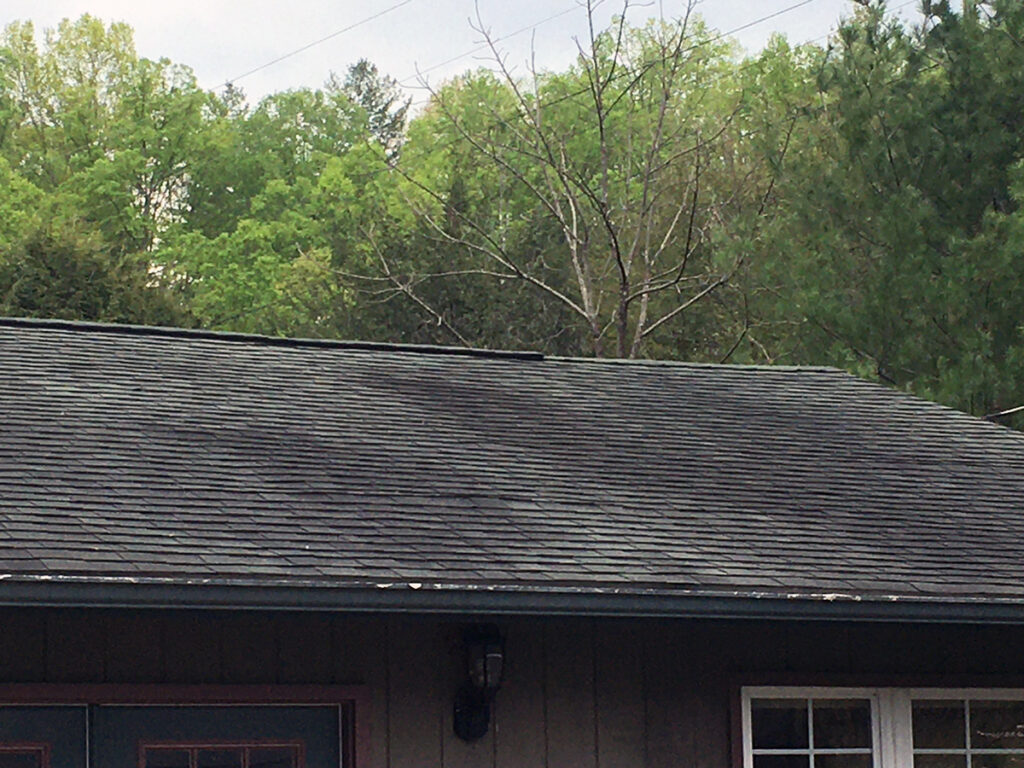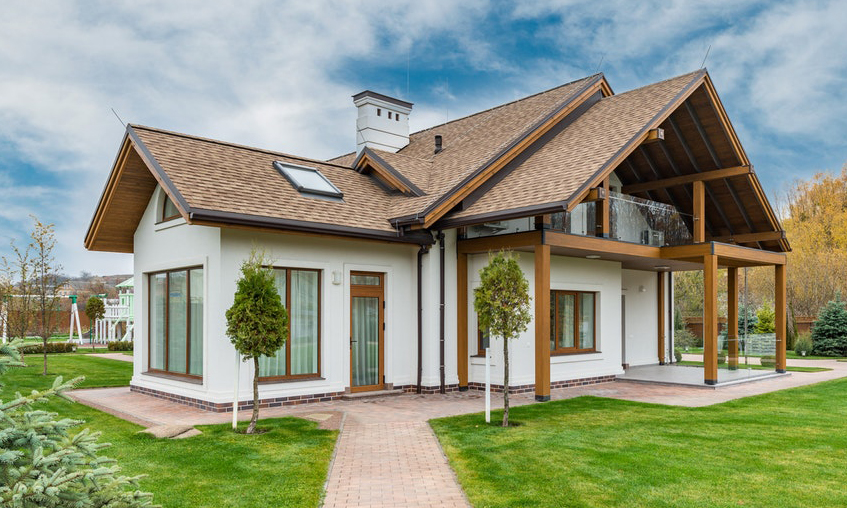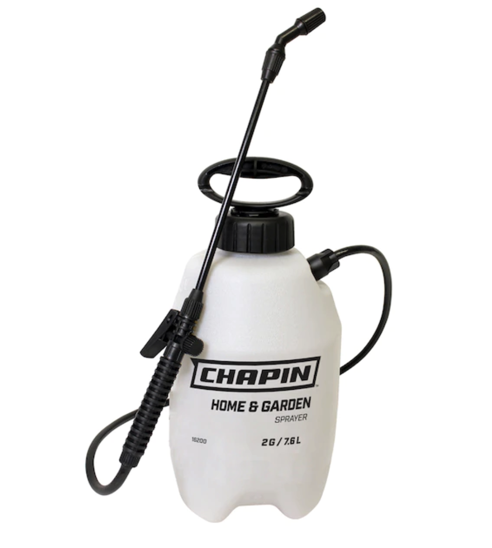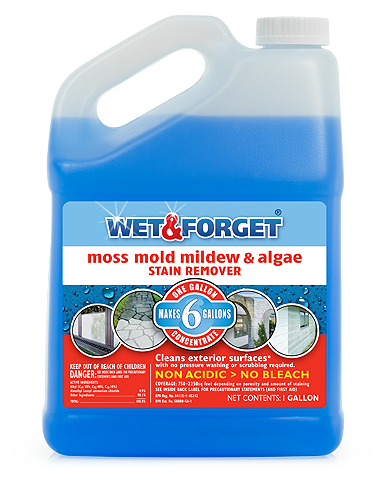
Does your asphalt shingle roof have black streaks, especially on the side facing north? This is very common in humid areas of the country. Often mistaken for mold or mildew, these stains are more likely caused by airborne spores of a blue-green algae species called Gloeocapsa Magma. Should you be worried? Is this a serious problem? Breathe easy. These spores do very little harm to your shingles, but they detract from the beauty of your home, especially if you are putting it up for sale any time soon. Even if you don’t intend to sell your home, you may be tired of seeing those black streaks.
Maybe you’ve noticed that stains and streaks are missing below any metal flashing on your roof. That’s because copper or zinc coatings on galvanized sheet metal are toxic to algae. So each time it rains, trace amounts of copper or zinc trickle down the roof and retard algae growth.
You may also have noticed that algae stains are absent directly below the metal flashing around chimneys or roof vents. This is due to fact that copper and the zinc coating on galvanized sheet metal are toxic to algae. Every time it rains, trace amounts of metals are washed down the roof, inhibiting algae growth.
Let’s explore a few ways to eliminate Gloeocapsa Magma.
First, what NOT to do!
Never pressure wash asphalt shingles. The water pressure will remove the layer of grit from the shingles, rendering them less effective to protect the roof. It also may lift shingles up from the roof surface, making your home susceptible to water damage during rainstorms.
There are “professional” services out there that claim they can pressure wash your shingles. Don’t let them even try it.
Get out your chemistry set!
If you’re the “mad scientist” type, you might want to make your own algae-killing concoction. Get yourself a garden pump-up sprayer, and put these ingredients into it:
- One quart bleach
- One gallon of water
- A cup of trisodium phosphate (TSP) per gallon
NEVER mix any product that contains ammonia with bleach. Toxic fumes can be harmful or even fatal.
You’ll also need a bit more gear before you get started.
- Garden hose with spray nozzle
- Safety glasses or goggles
- Rubber gloves
- Old clothes
- Slip resistant shoes
- A ladder
Be sure to wear goggles to protect your eyes from the bleach solution. You may also want to consider wearing a mask that guards against fumes, especially if you’re sensitive to bleach. The gloves are for keeping the bleach off your hands. The slip-resistant shoes are a no-brainer. Rooftops can be dangerous even when dry. Use extreme caution when you get them wet.
Now you’re ready to begin. Spray this mixture liberally over the algae stains, let it sit for about 20 minutes, and then rinse it off with a hose.
NOTE: The bleach solution run-off can harm or kill plants, so before you start, hose down any plants that may come into contact with the solution, or hose them and cover them with plastic sheeting for extra protection. When you’re done, hose them down again.
The store-bought method
If you’re not the type to mix potent home brews, try Wet & Forget Outdoor Cleaner, a ready-made, bleach-free solution with a solid reputation for conquering rooftop algae. Unlike many other products on the market, Wet & Forget is EPA registered and biodegradable. A single gallon container makes six gallons of solution. It has some other advantages, such as:
- Conserves water, since it requires no scrubbing or rinsing
- One-step application: Spray and walk away
- Works with the wind and rain to do its job over time
- Eliminates algae, moss, lichens, mold, or mildew
- No bleach, non-acidic (pH level of 8), and no phosphates
- Unlimited shelf life
- Stores indefinitely in the sprayer after mixing
- Safer for shingles than bleach
- Safe for all outdoor surfaces, such as decks, slabs, fences, and stone paths
- Keep shingles clean for more than a year
Zinc or copper keeps those shingles clean

Whether you choose home-made or store-bought, repeated use of chemicals may shorten the life of your shingles. That’s why the best solution is to prevent the algae from coming back. As mentioned above, galvanized metal containing zinc or copper is toxic to roof algae and can keep it from returning.
Install a 2” to 4” strip of copper- or zinc-coated sheet metal along each side of your roof just beneath the ridge. Pure copper is more toxic to algae, but galvanized sheet metal is far cheaper to buy and is readily available from most home stores.
If you’re confident working on the roof, attach these strips with roofing nails or screws with rubber washers. If you have reservations about penetrating your roof’s protective seal, call a professional roofer to do this job for you.
Replace with algae-resistant shingles
If it’s time to replace your roof, ask for algae-resistant shingles with copper granules mixed in. They may cost a bit more, but avoiding those ugly streaks may be worth the price.
While those unsightly streaks of algae may not really harm your roof, there’s no need to live with them if you choose otherwise. Clean them off, and then take steps to keep them from coming back.
Buy or selling a home in or near Asheville?
Avoid unpleasant surprises! Contact Asheville Home Inspector Peter Young before signing any contracts. Call (828) 808-4980, or click here to make an appointment online.

